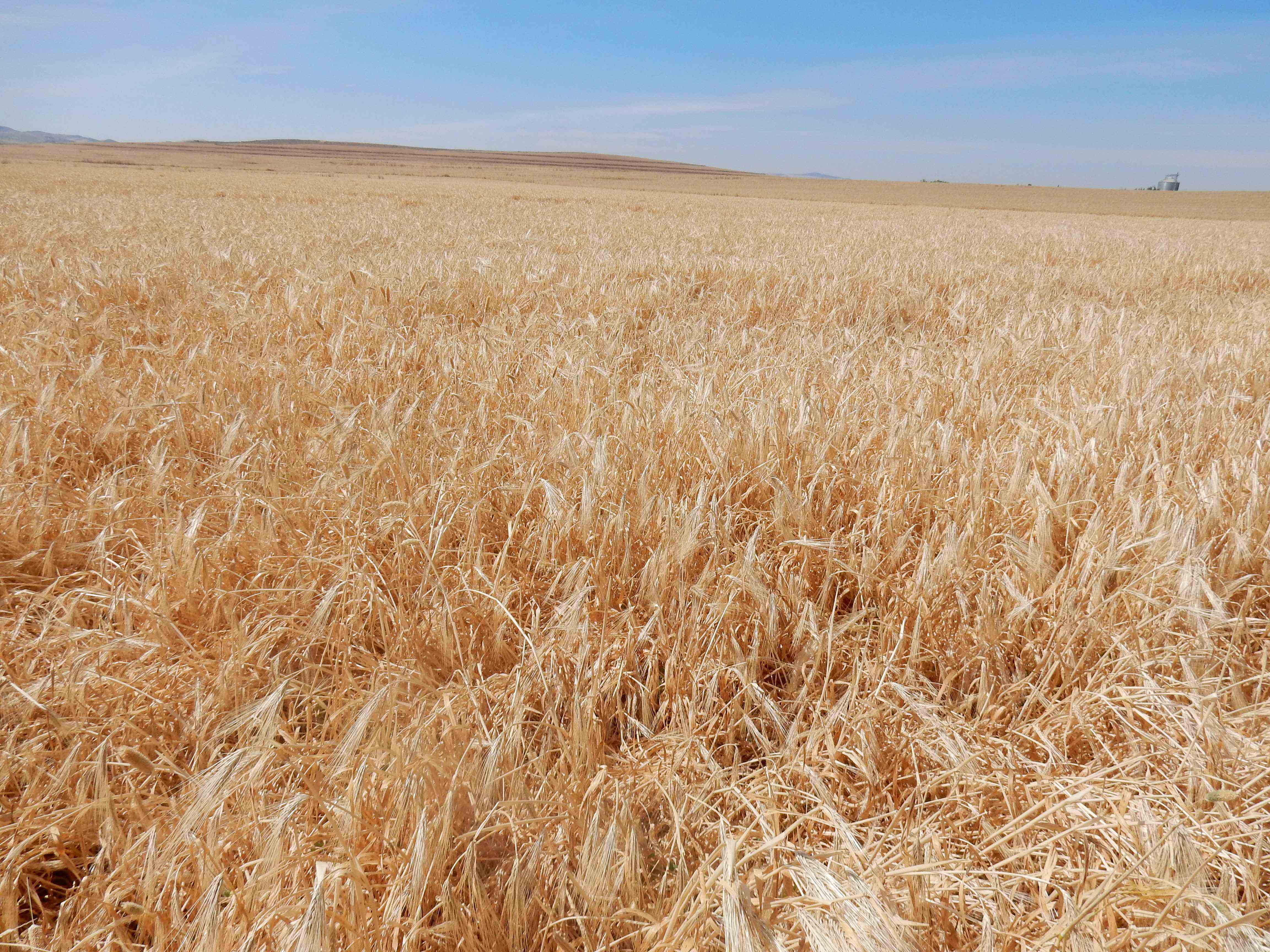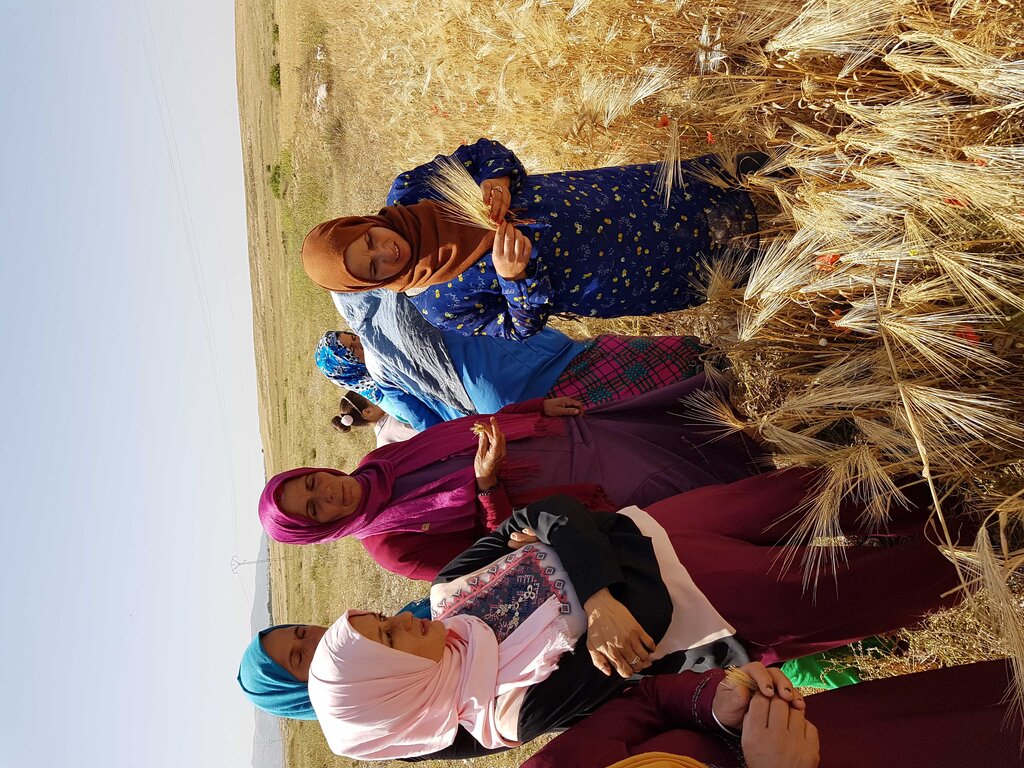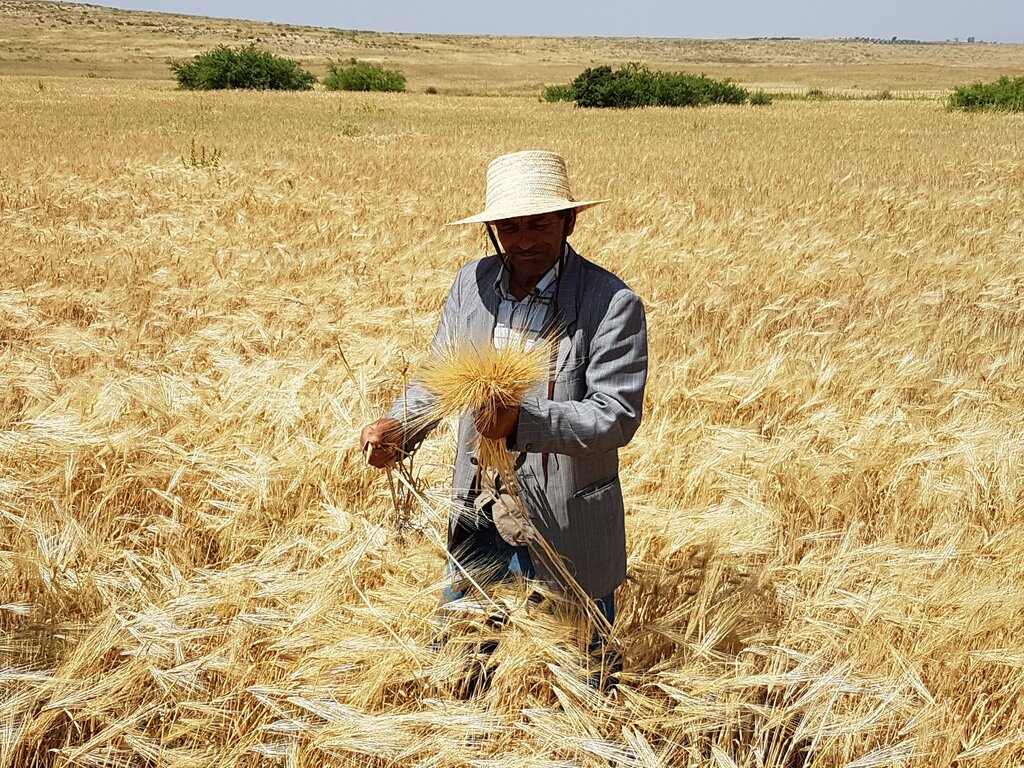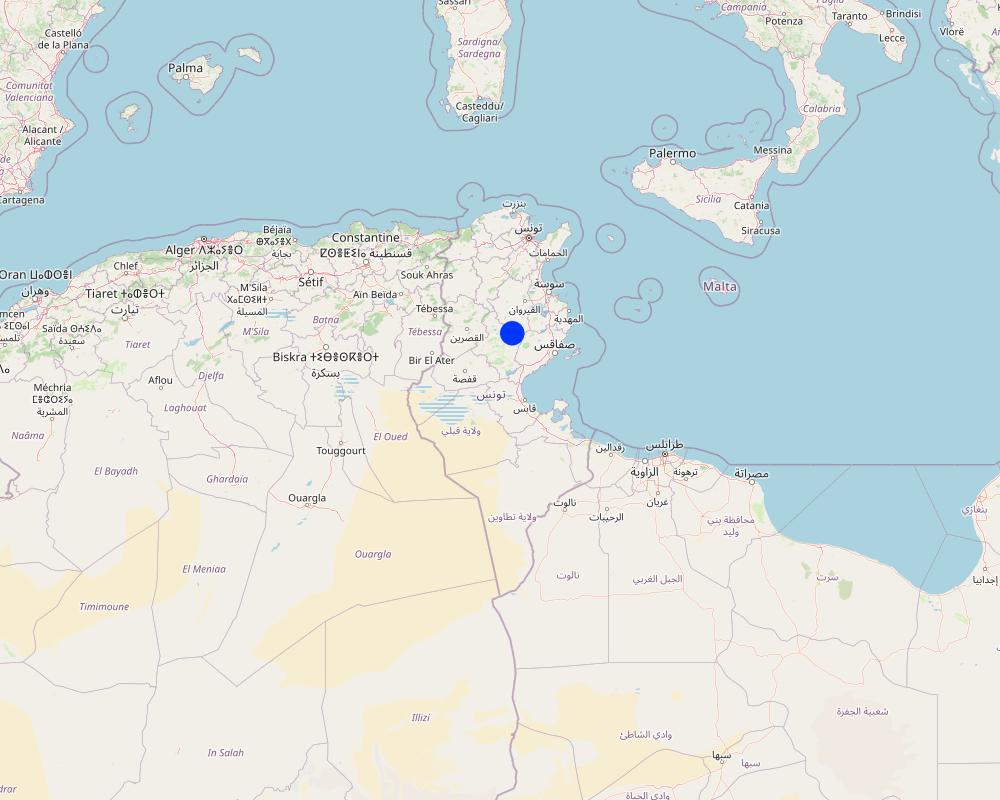Drought tolerant barley variety: 'Kounouz' [突尼斯]
- 创建:
- 更新:
- 编制者: Joren Verbist
- 编辑者: –
- 审查者: William Critchley, Rima Mekdaschi Studer
technologies_6739 - 突尼斯
查看章节
全部展开 全部收起1. 一般信息
1.2 参与该技术评估和文件编制的资源人员和机构的联系方式
关键资源人
Agricultural Innovation Specialis:
Rudiger Udo
International Center of Agriculture Research in the Dry Areas (ICARDA)
突尼斯
Ben Ghanem Hajer
INRAT
突尼斯
Zaiem Anis
OEP
突尼斯
Agricultural Economist:
Frija Aymen
International Center of Agriculture Research in the Dry Areas (ICARDA)
突尼斯
Agricultural and Resource Economist:
Dhehibi Boubaker
International Center of Agriculture Research in the Dry Areas (ICARDA)
突尼斯
Economics and Participatory Methods Expert:
Idoudi Zied
International Center of Agriculture Research in the Dry Areas (ICARDA)
突尼斯
有助于对技术进行记录/评估的项目名称(如相关)
ICARDA Institutional Knowledge Management Initiative有助于对技术进行记录/评估的机构名称(如相关)
International Center for Agricultural Research in the Dry Areas (ICARDA) - 黎巴嫩1.3 关于使用通过WOCAT记录的数据的条件
编制者和关键资源人员接受有关使用通过WOCAT记录数据的条件。:
是
1.4 所述技术的可持续性声明
这里所描述的技术在土地退化方面是否存在问题,导致无法被认为是一种可持续的土地管理技术?:
否
2. SLM技术的说明
2.1 技术简介
技术定义:
The introduction of 'Kounouz,' a drought-tolerant barley variety, has significantly enhanced farm income and reduced production risks for small-scale farmers in Tunisia.
2.2 技术的详细说明
说明:
Tunisia has a semi-arid climate with annual precipitation ranging between 200 and 450 millimetres. Many people are dependent on the agricultural sector. Typically, barley is cultivated and used for fodder or sale. Barley production is increasingly in danger of failure because of droughts worsened by climate change. Therefore, a new and drought tolerant barley variety was sought. NARS developed such seed by using germplasm that was made available by the International Center of Agricultural Research in Dry Areas (ICARDA).
As adoption of technologies is often the most difficult part of the innovation process, special care was put into this. It was found that combining different extension methods ranging from technical training to information through SMS led to the highest adoption. And solely focusing on the technical training was the most cost-effective approach. The targeted beneficiaries were small-scale farmers in central Tunisia. Their farm enterprises consist predominantly of small ruminant and cereal production. On average their farm size is 5 hectares and their flocks comprise 20 to 40 sheep and/or goats.
The benefits of the new, drought tolerant variety 'Kounouz' encompass enhanced farm income through reduced production risks and increased yields because Kounouz is better adapted to the semi-arid conditions. It makes more efficient use of water, therefore, Kounouz can produce grain with 300 millimetres of rainfall, whereas the alternative varieties (e.g., Rihane) need at least 350. Under favourable conditions (around 400 millimetres) Kounouz has higher yields than currently available varieties. Kounouz reaches 3 tonnes per hectare of grain, and 4.5 tonnes of straw.
The adoption of this variety has already made significant strides. By 2019, approximately 617 tonnes of certified seeds were available. This accomplishment was the result of successful collaboration between a large-scale cooperative, COSEM, and a private seed company, TUNIFERT. Presently, two more cooperatives, namely SOSEM and CCSPS, have also become actively involved.
It is worth noting that a mere 5% of the Kounouz seeds are estimated to be sourced from certified suppliers, with the majority being multiplied on individual farms. Consequently, it is estimated that the cultivation of Kounouz now spans over 20,000 hectares.
To further facilitate widespread adoption, the establishment of demonstration plots within target regions is imperative. This approach allows farmers, seed companies, and cooperatives to witness production first-hand and become persuaded of its benefits. However, the provision of adequate technical support and comprehensive coaching to farmers is indispensable.
The recommended cultivation practices for Kounouz are typically outlined as follows:
Field preparation, involving ploughing, is initiated at the onset of the rainy season, which generally occurs between September and October. Sowing activities take place in the months of November to December. In order to effectively manage weed growth, herbicide applications are undertaken from December to January. The quantity of herbicide utilized is contingent upon various factors, including climatic conditions, precipitation levels, and the preceding crop type. Notably, cultivating cereal crops after another cereal crop tends to result in a higher weed population compared to the cultivation of legume-cereal rotations. Depending on the geographical location of the farm, the application of mineral fertilizer is scheduled for the months of January to February in North-Western Tunisia. This timeline ensures that the fertilizer is strategically administered to optimize crop growth and yield.
We would like to thank BMZ/ GIZ who supported this innovation through their contributions to the “Mind the Gap” project as well as Tunisian NARES (INRAT, AVFA, OEP, CRDA) for co-implementing project activities
2.3 技术照片
2.5 已应用该技术的、本评估所涵盖的国家/地区/地点
国家:
突尼斯
具体说明该技术的分布:
- 均匀地分布在一个区域
如果不知道精确的区域,请注明大致覆盖的区域:
- 0.1-1 平方千米
技术现场是否位于永久保护区?:
否
Map
×2.6 实施日期
注明实施年份:
2021
2.7 技术介绍
详细说明该技术是如何引入的:
- 作为传统系统的一部分(> 50 年)
- 在实验/研究期间
- 通过项目/外部干预
3. SLM技术的分类
3.1 该技术的主要目的
- 改良生产
- 降低灾害风险
- 适应气候变化/极端天气及其影响
- 创造有益的经济影响
- 创造有益的社会影响
3.2 应用该技术的当前土地利用类型
同一土地单元内混合使用的土地::
否

农田
- 一年一作
年作 - 具体指明作物:
- 谷类 - 大麦

牧场
粗放式放牧:
- 半游牧畜牧业
动物类型:
- 山羊
- 绵羊
3.3 由于技术的实施,土地使用是否发生了变化?
由于技术的实施,土地使用是否发生了变化?:
- 否(继续问题3.4)
3.4 供水
该技术所应用土地的供水:
- 雨养
3.5 该技术所属的SLM组
- 改良植物品种/动物品种
3.6 包含该技术的可持续土地管理措施

农艺措施
- A5:种子管理,改良品种
3.7 该技术强调的主要土地退化类型

生物性退化
- Bq:数量/生物量减少
3.8 防止、减少或恢复土地退化
具体数量名该技术与土地退化有关的目标:
- 适应土地退化
4. 技术规范、实施活动、投入和成本
4.1 该技术的技术图纸
技术规范(与技术图纸相关):
Kounouz is advised to be sown with a rate of 120 kilograms per hectare and a spacing of around 18x2 cm
4.2 有关投入和成本计算的一般信息
具体说明成本和投入是如何计算的:
- 每个技术区域
注明尺寸和面积单位:
1 hectare
其它/国家货币(具体说明):
Tunisian Dinar
如相关,注明美元与当地货币的汇率(例如1美元=79.9巴西雷亚尔):1美元=:
3.0
注明雇用劳工的每日平均工资成本:
25
4.5 维护/经常性活动
| 活动 | 时间/频率 | |
|---|---|---|
| 1. | Field preparation | September - October |
| 2. | Seeding | November - December |
| 3. | Herbicide application | December- January |
| 4. | Fertilizer application | January - February |
| 5. | Harvesting and straw processing | May - June |
4.6 维护/经常性活动所需要的费用和投入(每年)
| 对投入进行具体说明 | 单位 | 数量 | 单位成本 | 每项投入的总成本 | 土地使用者承担的成本% | |
|---|---|---|---|---|---|---|
| 劳动力 | Field preparation | Person-hour | 6.0 | 25.0 | 150.0 | |
| 劳动力 | Sowing | Person-hour | 1.0 | 25.0 | 25.0 | |
| 劳动力 | Fertilizer application | Person-hour | 0.5 | 25.0 | 12.5 | |
| 劳动力 | Weeding | Person-hour | 0.5 | 25.0 | 12.5 | |
| 设备 | Plow | Machine-hour | 8.5 | 25.0 | 212.5 | |
| 设备 | Seeder | Machine-hour | 0.5 | 12.0 | 6.0 | |
| 设备 | Spreader | Machine-hour | 0.5 | 12.0 | 6.0 | |
| 设备 | Combine | Machine-hour | 1.0 | 80.0 | 80.0 | |
| 设备 | Pressor (for straw processing) | Machine-hour | 1.0 | 100.0 | 100.0 | |
| 设备 | Sprayer | Machine-hour | 2.0 | 12.0 | 24.0 | |
| 植物材料 | Seed | Kilograms | 100.0 | 0.78 | 78.0 | |
| 肥料和杀菌剂 | DPA | Kilogram | 100.0 | 0.67 | 67.0 | |
| 肥料和杀菌剂 | Ammonite | Liter | 100.0 | 0.54 | 54.0 | |
| 肥料和杀菌剂 | Zoom (Herbicide) | Liter | 100.0 | 0.25 | 25.0 | |
| 肥料和杀菌剂 | Axial (Herbicide) | Liter | 1.0 | 110.0 | 110.0 | |
| 其它 | Herbicide application (labour) | Person-hour | 0.5 | 25.0 | 12.5 | |
| 其它 | Harvesting (labour) | Person-hour | 1.0 | 80.0 | 80.0 | |
| 技术维护所需总成本 | 1055.0 | |||||
| 技术维护总成本,美元 | 351.67 | |||||
注释:
This no different than conventional varieties and practices.
5. 自然和人文环境
5.1 气候
年降雨量
- < 250毫米
- 251-500毫米
- 501-750毫米
- 751-1,000毫米
- 1,001-1,500毫米
- 1,501-2,000毫米
- 2,001-3,000毫米
- 3,001-4,000毫米
- > 4,000毫米
农业气候带
- 半干旱
- 干旱
5.2 地形
平均坡度:
- 水平(0-2%)
- 缓降(3-5%)
- 平缓(6-10%)
- 滚坡(11-15%)
- 崎岖(16-30%)
- 陡峭(31-60%)
- 非常陡峭(>60%)
地形:
- 高原/平原
- 山脊
- 山坡
- 山地斜坡
- 麓坡
- 谷底
垂直分布带:
- 0-100 m a.s.l.
- 101-500 m a.s.l.
- 501-1,000 m a.s.l.
- 1,001-1,500 m a.s.l.
- 1,501-2,000 m a.s.l.
- 2,001-2,500 m a.s.l.
- 2,501-3,000 m a.s.l.
- 3,001-4,000 m a.s.l.
- > 4,000 m a.s.l.
说明该技术是否专门应用于:
- 不相关
5.3 土壤
平均土层深度:
- 非常浅(0-20厘米)
- 浅(21-50厘米)
- 中等深度(51-80厘米)
- 深(81-120厘米)
- 非常深(> 120厘米)
土壤质地(表土):
- 中粒(壤土、粉土)
土壤质地(地表以下> 20厘米):
- 粗粒/轻(砂质)
- 中粒(壤土、粉土)
表土有机质:
- 低(<1%)
5.4 水资源可用性和质量
地下水位表:
< 5米
地表水的可用性:
匮乏/没有
水质(未处理):
不良饮用水(需要处理)
水质请参考::
地下水
水的盐度有问题吗?:
是
该区域正在发生洪水吗?:
否
5.5 生物多样性
物种多样性:
- 低
栖息地多样性:
- 低
5.6 应用该技术的土地使用者的特征
定栖或游牧:
- 定栖的
生产系统的市场定位:
- 混合(生计/商业)
非农收入:
- 收入的10-50%
相对财富水平:
- 贫瘠
- 平均水平
个人或集体:
- 个人/家庭
- 团体/社区
机械化水平:
- 手工作业
- 机械化/电动
性别:
- 女人
- 男人
土地使用者的年龄:
- 中年人
- 老年人
5.7 应用该技术的土地使用者使用的平均土地面积
- < 0.5 公顷
- 0.5-1 公顷
- 1-2 公顷
- 2-5公顷
- 5-15公顷
- 15-50公顷
- 50-100公顷
- 100-500公顷
- 500-1,000公顷
- 1,000-10,000公顷
- > 10,000公顷
5.8 土地所有权、土地使用权和水使用权
土地所有权:
- 个人,未命名
- 个人,有命名
土地使用权:
- 个人
用水权:
- 社区(有组织)
- 个人
具体说明:
Land use rights in Tunisia have a long history with religious (e.g. melk) influences and French influences. This resulted in that currently most lands are private owned or state owned.
5.9 进入服务和基础设施的通道
健康:
- 贫瘠
- 适度的
- 好
教育:
- 贫瘠
- 适度的
- 好
技术援助:
- 贫瘠
- 适度的
- 好
就业(例如非农):
- 贫瘠
- 适度的
- 好
市场:
- 贫瘠
- 适度的
- 好
能源:
- 贫瘠
- 适度的
- 好
道路和交通:
- 贫瘠
- 适度的
- 好
饮用水和卫生设施:
- 贫瘠
- 适度的
- 好
金融服务:
- 贫瘠
- 适度的
- 好
6. 影响和结论性说明
6.1 该技术的现场影响
社会经济效应
生产
作物生产
生产故障风险
收入和成本
农业收入
对现场影响的评估(测量)进行具体说明:
Expert judgement and (field) data
6.2 该技术的场外影响已经显现
对场外影响(测量)的评估进行具体说明:
Not significant
6.3 技术对渐变气候以及与气候相关的极端情况/灾害的暴露和敏感性(土地使用者认为的极端情况/灾害)
渐变气候
渐变气候
| 季节 | 增加或减少 | 该技术是如何应对的? | |
|---|---|---|---|
| 季雨量 | 湿季/雨季 | 减少 | 非常好 |
气候有关的极端情况(灾害)
气候灾害
| 该技术是如何应对的? | |
|---|---|
| 干旱 | 非常好 |
6.4 成本效益分析
技术收益与技术建立成本相比如何(从土地使用者的角度看)?
短期回报:
积极
长期回报:
积极
技术收益与技术维护成本/经常性成本相比如何(从土地使用者的角度看)?
短期回报:
积极
长期回报:
积极
6.5 技术采用
- 11-50%
在所有采用这项技术的人当中,有多少人是自发的,即未获得任何物质奖励/付款?:
- 11-50%
6.6 适应
最近是否对该技术进行了修改以适应不断变化的条件?:
否
6.7 该技术的优点/长处/机会
| 土地使用者眼中的长处/优势/机会 |
|---|
| Increased farm income |
| Improved yields |
| Drought tolerance |
| 编制者或其他关键资源人员认为的长处/优势/机会 |
|---|
| No major changes in land management |
| Increased food security |
6.8 技术的弱点/缺点/风险及其克服方法
| 编制者或其他关键资源人员认为的弱点/缺点/风险 | 如何克服它们? |
|---|---|
| The adoption of Kounouz by more farmers | Installing more pilot/demonstration field so farmers can experience the benefits firsthand, together with adequate training and coaching. |
7. 参考和链接
7.1 信息的方法/来源
- 实地考察、实地调查
- 与SLM专业人员/专家的访谈
- 根据报告和其他现有文档进行编译
(现场)数据是什么时候汇编的?:
2021
7.3 链接到网络上的相关信息
标题/说明:
Boubaker Dhehibi, Mohamed Zied Dhraief, Udo Rudiger, Aymen Frija, Jutta Werner, Liza Straussberger, Barbara Rischkowsky. (13/4/2022). Impact of improved agricultural extension approaches on technology adoption: Evidence from a randomised controlled trial in rural Tunisia. Experimental Agriculture, 58, pp. 1-16.
URL:
https://hdl.handle.net/20.500.11766/67344
标题/说明:
Udo Rudiger. (22/4/2020). Mind the Gap: Improving Dissemination Strategies to Increase Technology Adoption by Smallholders_Final Technical Report.
URL:
https://hdl.handle.net/20.500.11766/11120
链接和模块
全部展开 全部收起链接
无链接
模块
无模块






